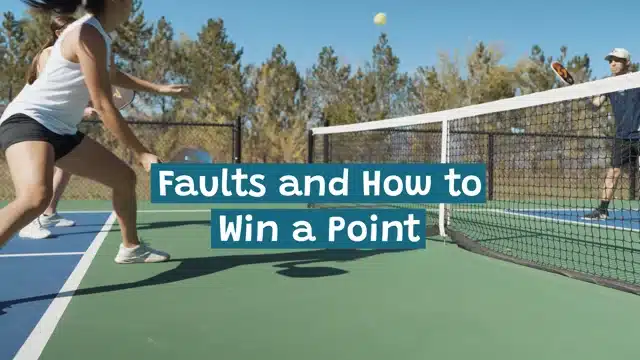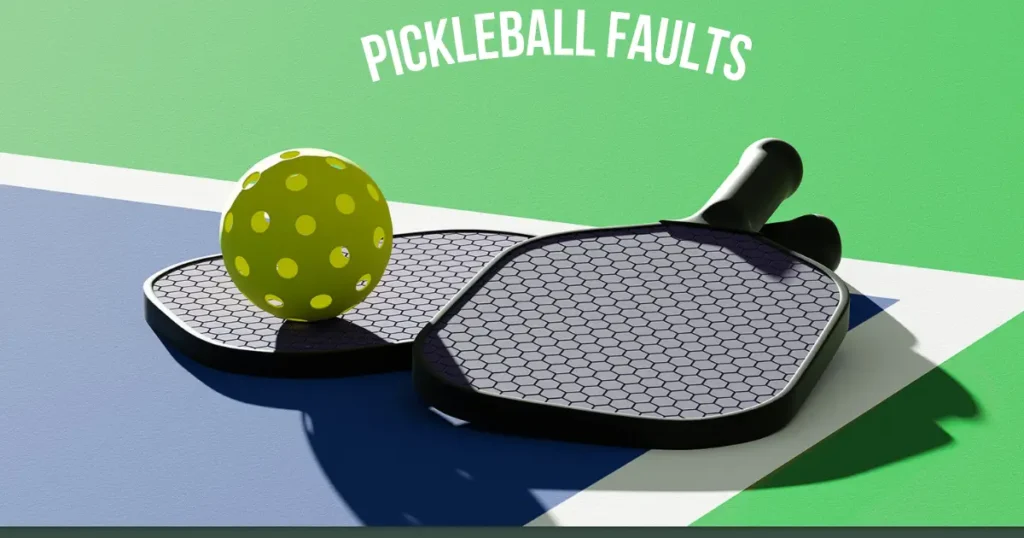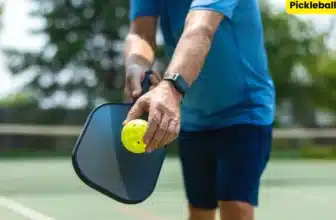
Pickleball is a very simple yet popular game. You might have come across someone who loves the game, or you might have yourself started developing interest in the game. Basically, this sport is a blend of tennis, badminton, and ping pong and has gained immense popularity in recent years, so much so that it has become one of the most played sports in the US. It is easy, easily accessible and everyone can play it. But it has some set of rules – rules that everyone has to follow. If you are someone who has just started playing pickleball, you might not be familiar with all the rules. But let us tell you, if you truly want to enjoy the game, you need to know all the pickleball rules.
Knowing pickleball rules is also important so that you can avoid any mistakes, any faults in the game. So what are some common faults in pickleball that beginners usually make, what causes such faults to happen? And is there any way to avoid such faults? All of this and much more shall be uncovered in this guide. So let’s get started!
What Are Some Common Faults in Pickleball?
Before we learn what are some common faults in the game, let’s just briefly discuss what is a fault in pickleball. Simply put, it’s a violation of the game. And keep in mind that such violations can completely halt your game. If a player makes such a mistake or violates any rules of the game, the pickle ball becomes dead.
There are many ways a person may cause a fault in pickleball, let’s discuss the most common ones:

1. Not Letting the Ball Bounce:
If you have played pickleball in the past and are familiar with the pickleball rules, you must know that both the server and the receiver must let the ball bounce once on their side of the court before hitting it. This rule is basically just to make sure that the game is fair and gives both players an equal opportunity to return the ball. If you fail to let the ball bounce and instead hit it in the air directly after the serve, that would be considered a fault. And since it’s a fault from your side, your opponent will get a point and a chance to serve, bad isn’t it?
2. Hitting the Ball into the Net:
Another very common fault you get to see on the court is when a player hits the ball into the net, and it fails to cross over to the opponent’s side. This rule basically says that the ball has to get over the net to keep the rally going. But if it doesn’t, it’s a fault. And if this fault occurs in the court, the opposing team earns a point and takes over the serve.
3. Going Under the Net:
Another very common fault usually seen on the court from the beginners’ side is stepping or reaching under the net into the opponent’s side of the court. This too is against the rules in pickleball. The reason why this rule exists is to basically ensure player safety and prevent potential collisions. If a player violates this rule, it results in a fault, and the opposing team again gains a point.
4. Out of Bounds:
If the ball lands outside the court boundaries or on the player’s side of the court, it is considered out of bounds, and yes, a fault too. This fault emphasizes the importance of accuracy in shot placement. When a fault like this occurs, as expected, the opposing team again earns a point and gets to serve.
5. Letting the Ball Bounce Twice:
If your ball bounces twice on your side without making contact, you cause a fault in the game. But this rule doesn’t apply to wheelchair players. In one sense, this rule basically encourages players to stay active during rallies and prevents delays in gameplay. But when you violate the rule, a fault in pickleball occurs, and as with every fault in pickleball, the opponent gets a point.
6. Breaking Serve Rules:
Any violation of the serve rules, such as hitting the ball above the waist or serving out of turn, constitutes a fault. These rules ensure fairness in the game and consistency in serving. But when a fault occurs, the opposing team gains a point and assumes the serve as with every other fault mentioned in the list.
7. Touching the Net or Opponent’s Side:
Net rules do exist in pickleball. If you make contact with the net or cross into the opponent’s side of the court during play, it goes against the rules in pickleball and yes, it becomes a fault. This rule is supposed to prevent interference and maintain the integrity of the game. If a fault occurs, the opposing team earns a point.
8. Using Anything But Your Paddle or Hand:
If you are a seasoned player, you might be well aware that after the serve, players are only allowed to use their paddle or hand below the wrist to hit the ball. This means you can’t use any other body part to make contact with the ball. This rule promotes fair play and prevents players from using other body parts or objects to make contact with the ball. If a fault occurs, the opposing team earns a point.
9. Stopping a Live Ball:
If you stop the ball either with your hand or any other part of the body before it hits the ground, you basically interrupt the play and this action too is considered a fault. The concept behind this rule is to make the game flow smoothly and prevent unnecessary delays. When a fault occurs, the opposing team earns a point.
10. Hitting Permanent Objects:
If the ball hits a permanent object, such as a bench or a fence, before bouncing, it is considered a fault. This rule encourages players to aim accurately and keep the ball within the court boundaries. If a fault occurs, the opposing team earns a point.
11. Breaking Non-Volley Zone Rules:
You might be familiar with the non-volley zone of the onlineall, also known as the kitchen of the pickleball. There are some pickleball kitchen rules you need to follow. Any violation of the Non-Volley Zone rules, like volleying while standing inside the zone, is considered a fault. These rules prevent players from gaining an unfair advantage near the net. When a fault occurs, the opposing team earns a point.
12. Hitting the Ball Too Early:
Hitting the ball before it crosses the net to the player’s side of the court is against the rules. And if you do so, you make a mistake. This rule ensures that players wait for the ball to be in play before making contact. If a fault occurs, the opposing team earns a point.
13. Foot Fault in Pickleball:
What is a foot fault in pickleball? A foot fault in pickleball occurs when the server’s foot crosses the baseline or sidelines before making contact with the ball during the serve. It’s a violation of the rules and results in the loss of the serve and again, your opponent gets a point.
How Are Faults Called in Pickleball?
In pickleball, fairness and honesty are key. And that is why in this game, you are expected to call out faults on yourself if you make them. It’s one of the signs showing good sportsmanship. If you notice your opponent making a mistake, you can mention it, but you can’t enforce it – they have to admit to it themselves.
However, in games without a referee, you can call out Non-Volley Zone and serve foot faults pickleball on your opponent’s side. If there’s any disagreement, just replay the point. But if there’s a referee, they handle these calls for you, so you can focus on playing your best game.
Bottom Line
So, to summarize, you really need to understand the rules of pickleball and pickleball faults if you truly wish to enjoy the game to the fullest. From letting the ball bounce to avoiding foot fault in pickleball , you must know violating what set of rules can constitute a fault. Calling out faults in yourself and practicing good sportsmanship is also very important if you truly want to ace the game. So, whether you are playing with friends or in a tournament, keep these rules in mind to elevate your pickleball experience!






